A major, long-duration solar flare measuring X1.1 erupted from Active Region 3614 (provisional) at 01:33 UTC on March 23, 2024. The event started at 00:58 and ended at 02:21 UTC. A full halo CME was produced, with impacts to Earth likely on late March 25 or early March 26.
A Type II Radio Emission with an estimated velocity of 791 km/s was associated with the event — indicating a coronal mass ejection (CME) was produced.
In addition, a 10cm Radio Burst (tenflare) lasting 66 minutes and with a peak flux of 240 sfu was also associated with this event. A 10cm radio burst indicates that the electromagnetic burst associated with a solar flare at the 10cm wavelength was double or greater than the initial 10cm radio background. This can be indicative of significant radio noise in association with a solar flare. This noise is generally short-lived but can cause interference for sensitive receivers including radar, GPS, and satellite communications.
The event produced a full halo CME and part of it is likely Earth-directed. “This could easily give us G2, possibly G3-level impacts, sometime late March 25 or early March 26,” Dr. Tamitha Skov said. “Waiting for NASA and NOAA models to confirm,” Skov added.
Radio frequencies were forecast to be most degraded over Japan, the Philippines, Indonesia, Australia, and New Zealand at the time of the flare.
The flare was still in progress when a solar filament erupted near Region 3615, producing what might be an M-class event.
It’s worth noting that SWPC forecasters initially said it’s hard to say with certainty which region [3615 or 3614] was the source of X flare, but the flare from 3614 appears to have a likely coronal mass ejection (CME) associated with it. “We must await imagery to be sure and begin analysis accordingly.”
In the reviewed solar flare events list for the day, SWPC attributed the X-class flare to Active Region 3614 (beta).
Both regions are in geoeffective positions, suggesting any CME they produce today and over the next couple of days would be Earth-directed.
Proton flux levels started sharply rising following this activity (at 03:50 UTC) and are now approaching the S1 – Minor solar radiation storm threshold. As a result, an S1 – Minor solar radiation storm watch is in effect through 21:00 UTC today.
Furthermore, a G1 – Minor geomagnetic storm is currently in progress. Additional enhancements are likely on March 24 from the anticipated co-rotating interaction region (CIR) ahead of a negative polarity coronal hole high speed stream (CH HSS), with isolated periods of G1 – Minor storming likely on March 25.
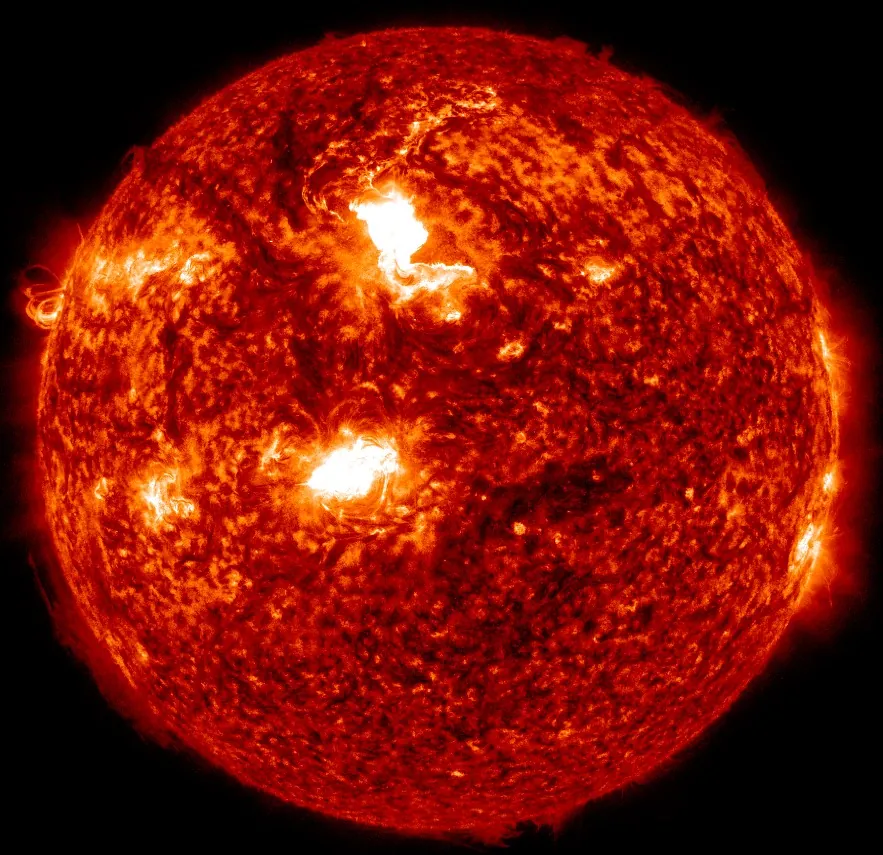
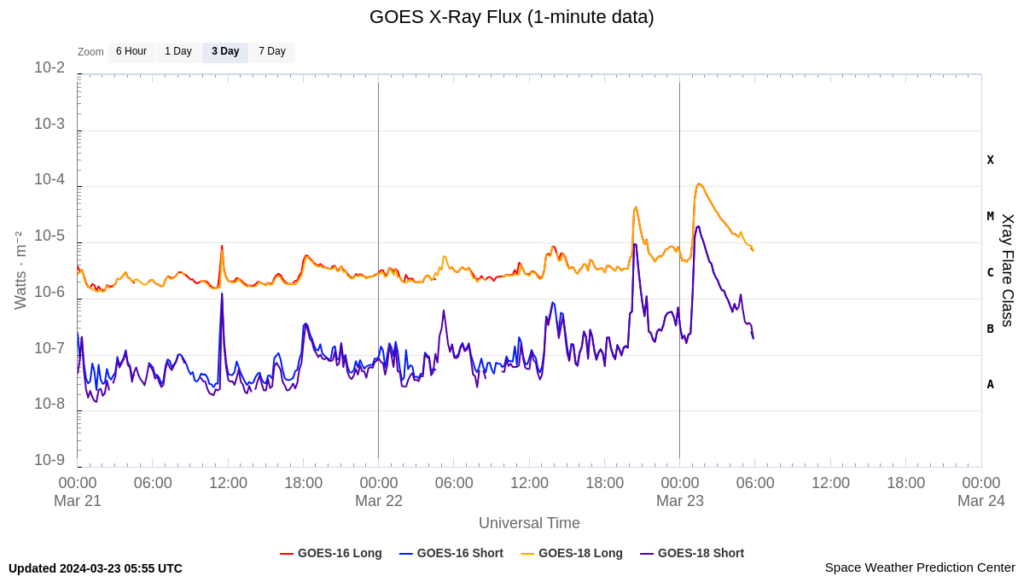

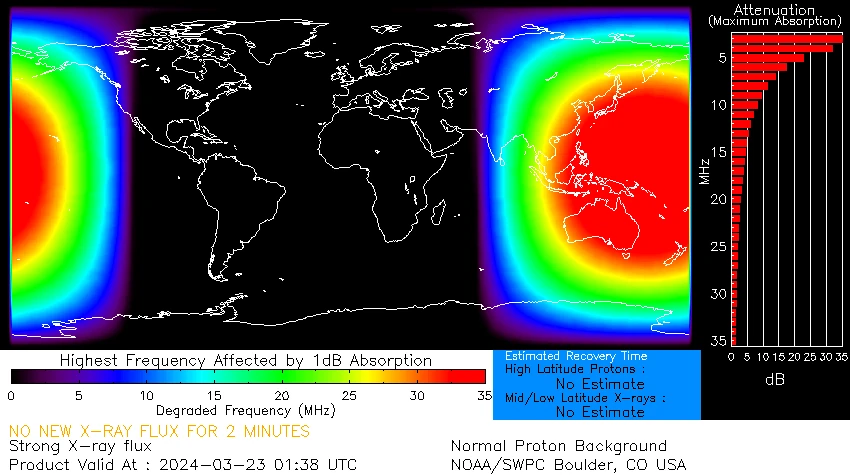

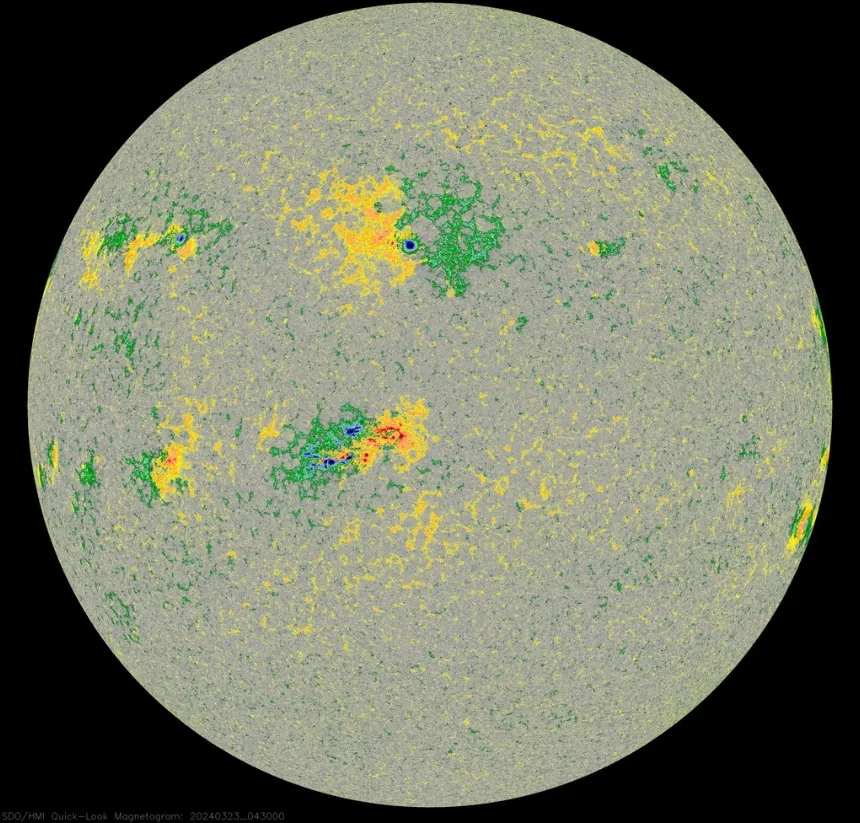

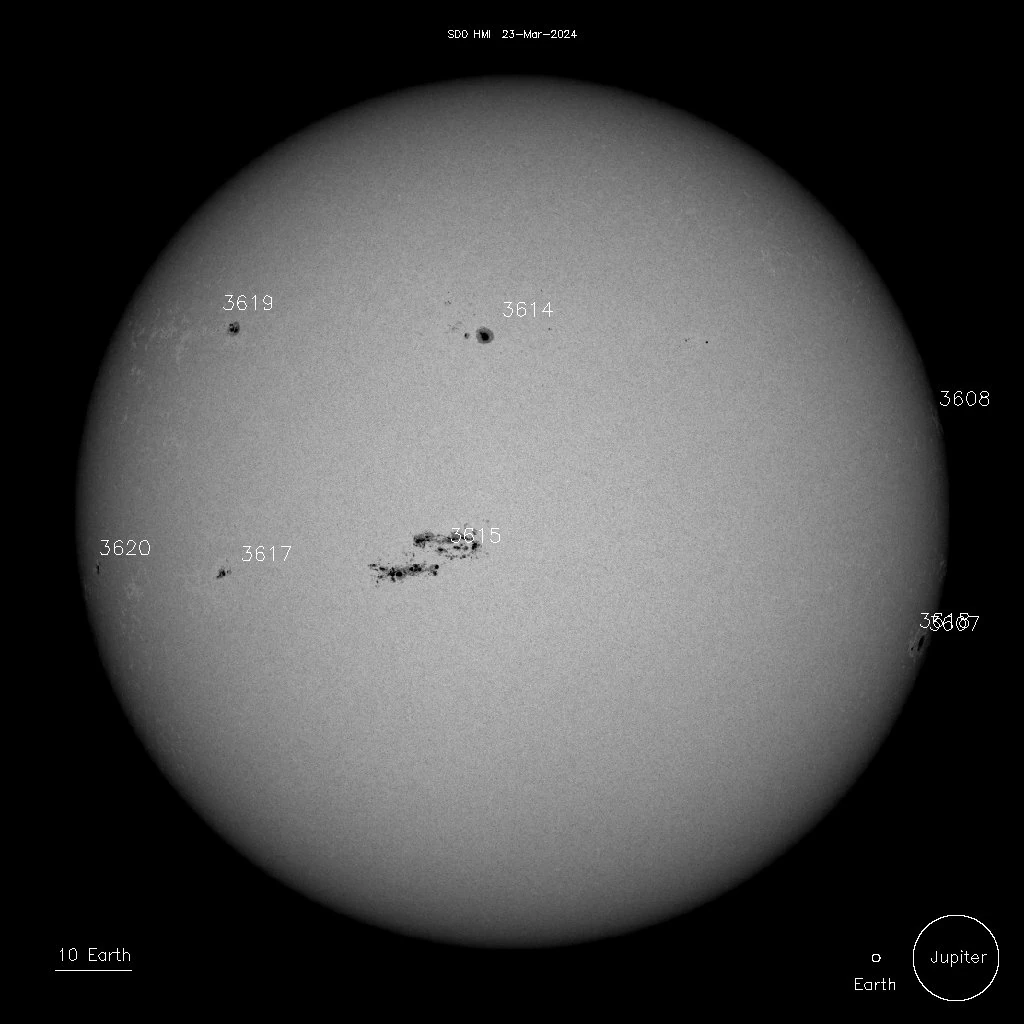

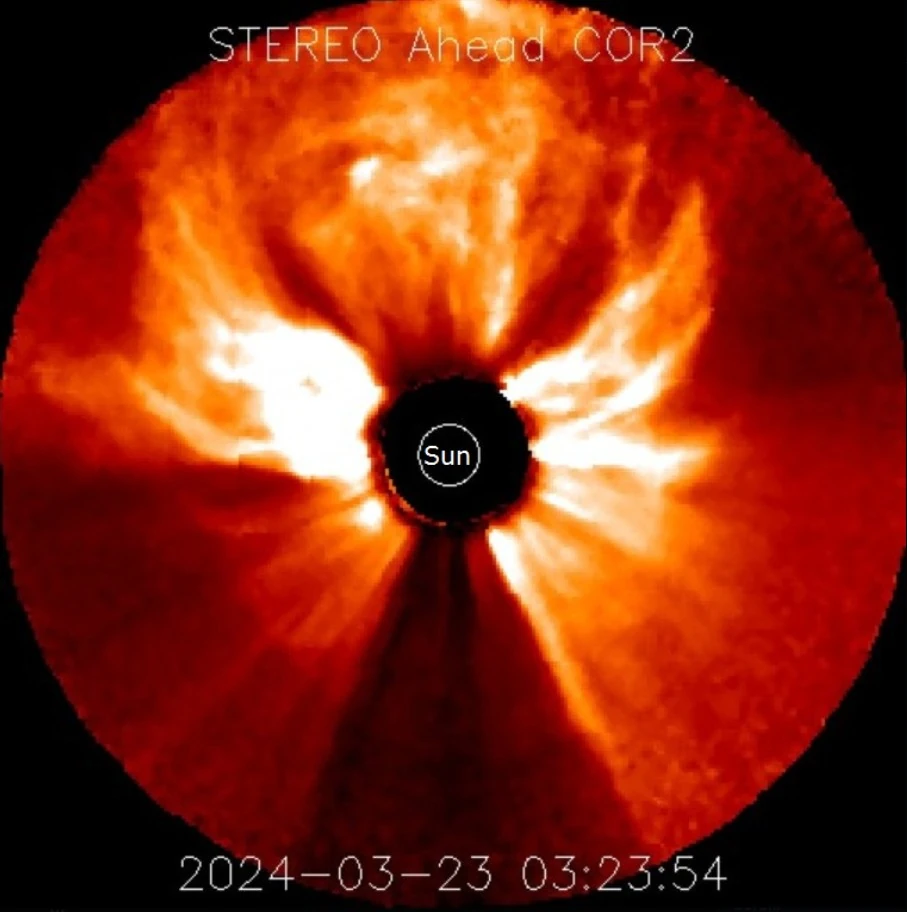

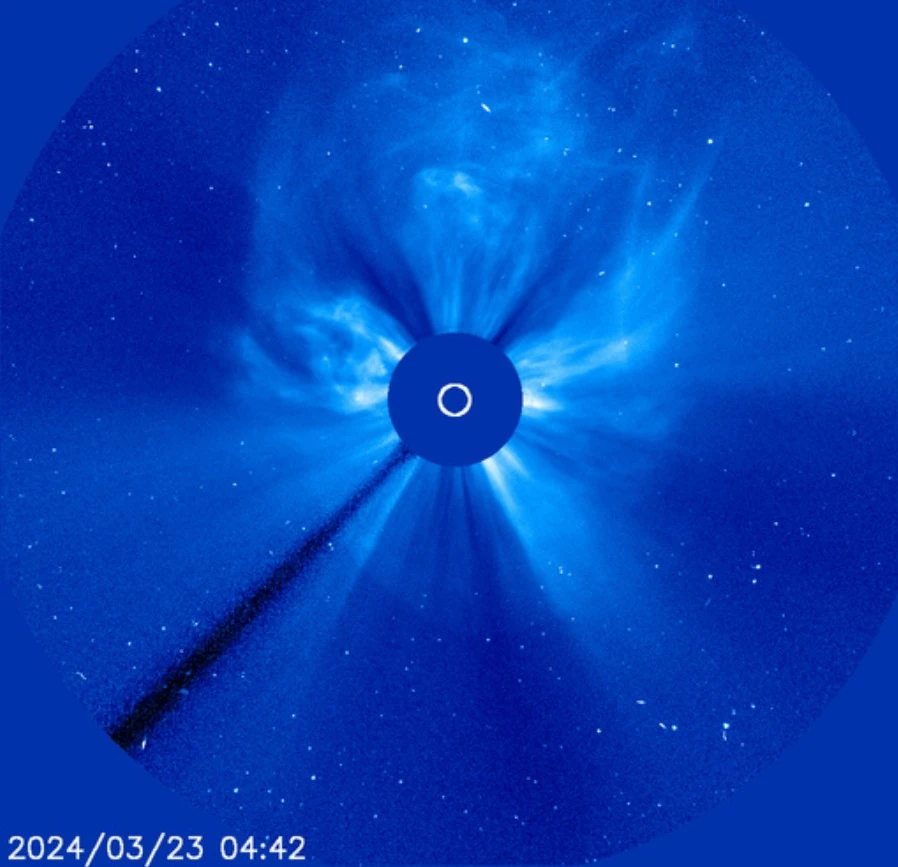

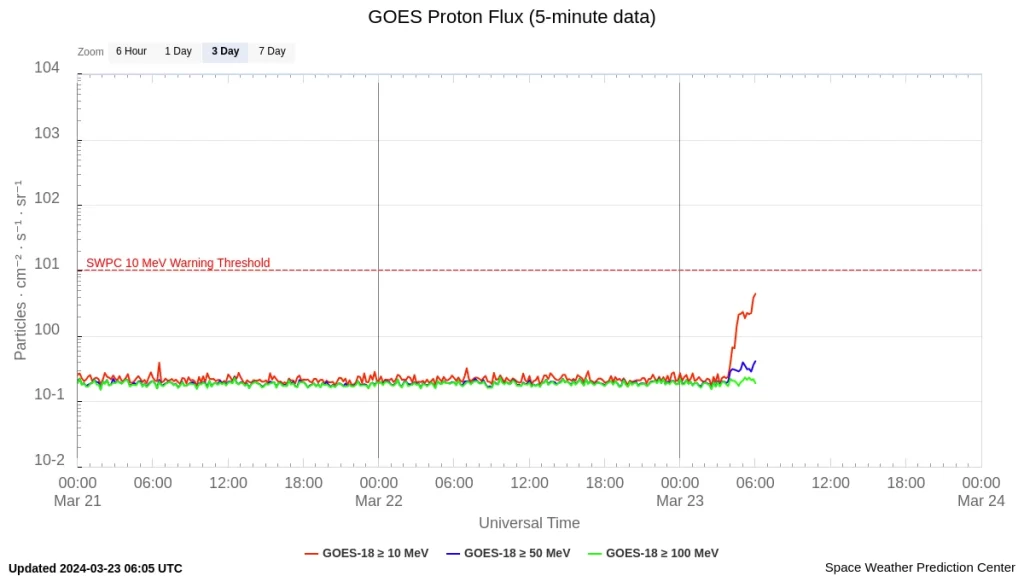

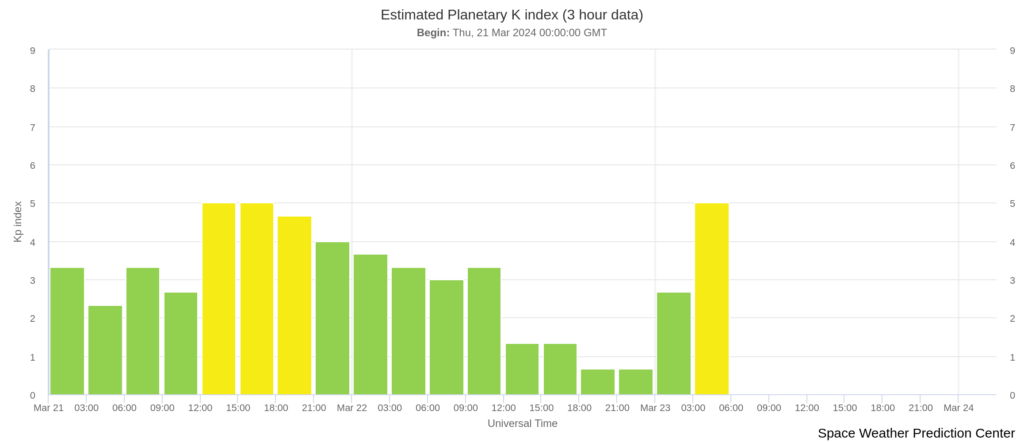

Featured image credit: NASA/STEREO Ahead COR2. Acquired at 03:23 UTC on March 23, 2024
Strong M7.4 solar flare erupts from AR 3615
Wednesday, March 20, 2024
Strong M6.7 solar flare erupts from emerging region on SE limb
Monday, March 18, 2024
Filament eruption produces Earth-directed CMEs
Monday, March 18, 2024
Severe Tropical Cyclone “Megan” reaches Category 3, landfall expected on March 18, Australia
Sunday, March 17, 2024
Strong solar flare erupts from the SE limb, signaling increased solar activity in the days ahead
Saturday, March 16, 2024
Proton flux rising following multiple long-duration C-class flares, S1 – Minor solar radiation storm
Saturday, March 16, 2024
Tornado outbreak strikes Indiana and Ohio, numerous injuries, 2 fatalities reported
Friday, March 15, 2024